AWS Cloud Practitioner CLF-C02
Billing and Pricing
Specific Billing RDS
Welcome back, Cloud Practitioners! In this lesson, we dive deep into AWS RDS billing details and pricing strategies. We'll break down the key elements that determine the cost of running Relational Database Service (RDS) instances.
RDS pricing depends on several factors including the service type, database engine, instance compute size, storage options, and additional features.
Service Selection
The first step in understanding RDS billing is to choose the right RDS service. There are three main options:
- Standard RDS: Offers five database engines.
- Aurora: A fully managed cloud solution that functions as a MySQL/PostgreSQL clone.
- Aurora Serverless: Features auto-scaling with serverless management (version two is recommended).
Each service provides unique capabilities. For example, only the standard RDS service supports Oracle and Microsoft SQL Server. Note that these engines require third-party proprietary licenses. You may choose a Bring Your Own License (BYOL) option when available, but open-source engines like PostgreSQL, MySQL, and MariaDB are offered without multiple licensing options.
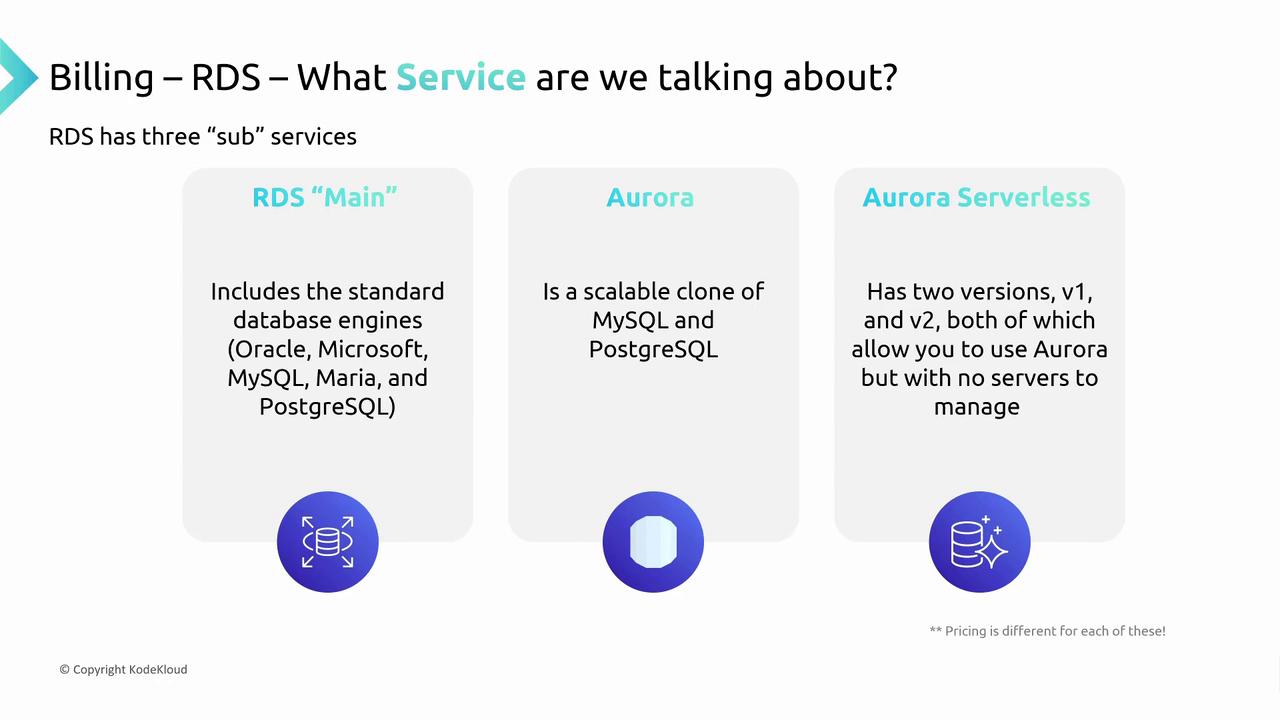
Database Engine and Flavors
After selecting your service, the next step is to choose the appropriate database engine and edition. For the standard RDS service:
- Proprietary Engines: Options include Oracle and SQL Server, available in multiple editions such as Standard and Enterprise, each affecting pricing differently.
- Open-Source Engines: PostgreSQL, MySQL, and MariaDB are offered without edition variations, making them cost-effective.
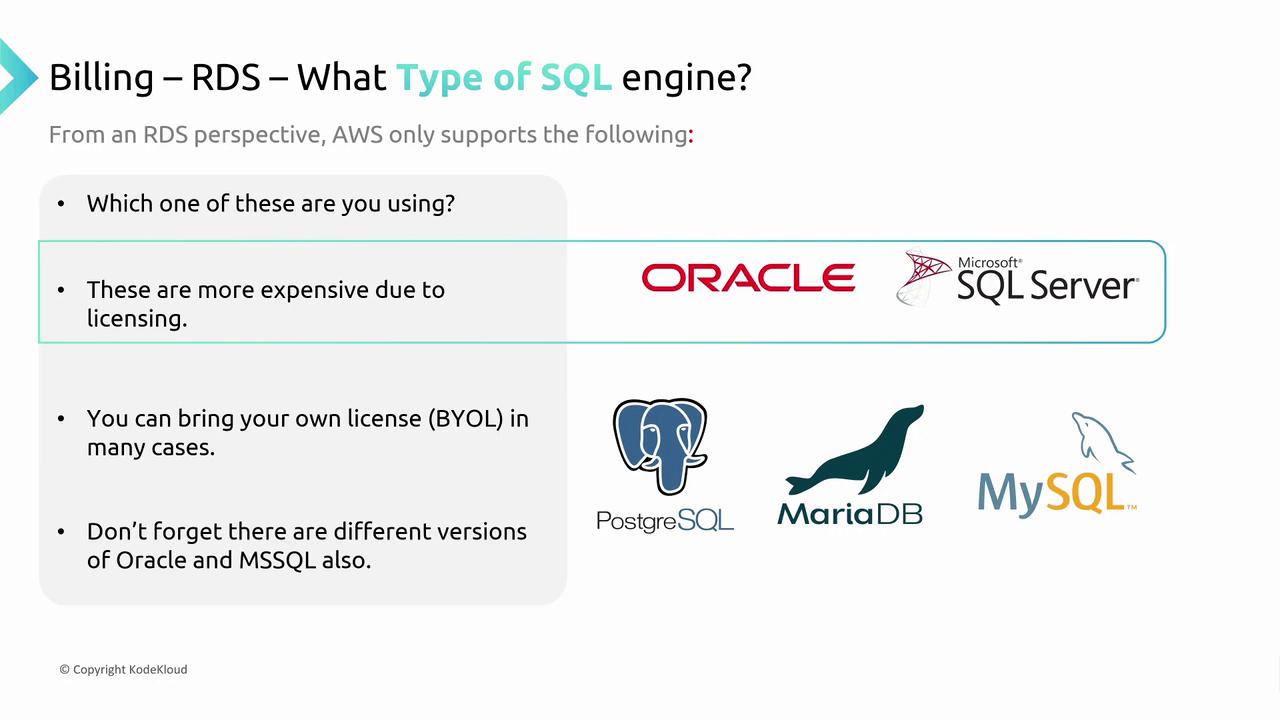
Database Instances
RDS utilizes database instances—specialized virtual machines tailored for database workloads. Similar to EC2 instances, they come in various sizes, such as DB T3 Small, DB T3 Medium, or DB T3 Large. As the instance size increases, so do CPU, memory, and network bandwidth, directly impacting cost. Billing is typically calculated on an hourly basis per instance.
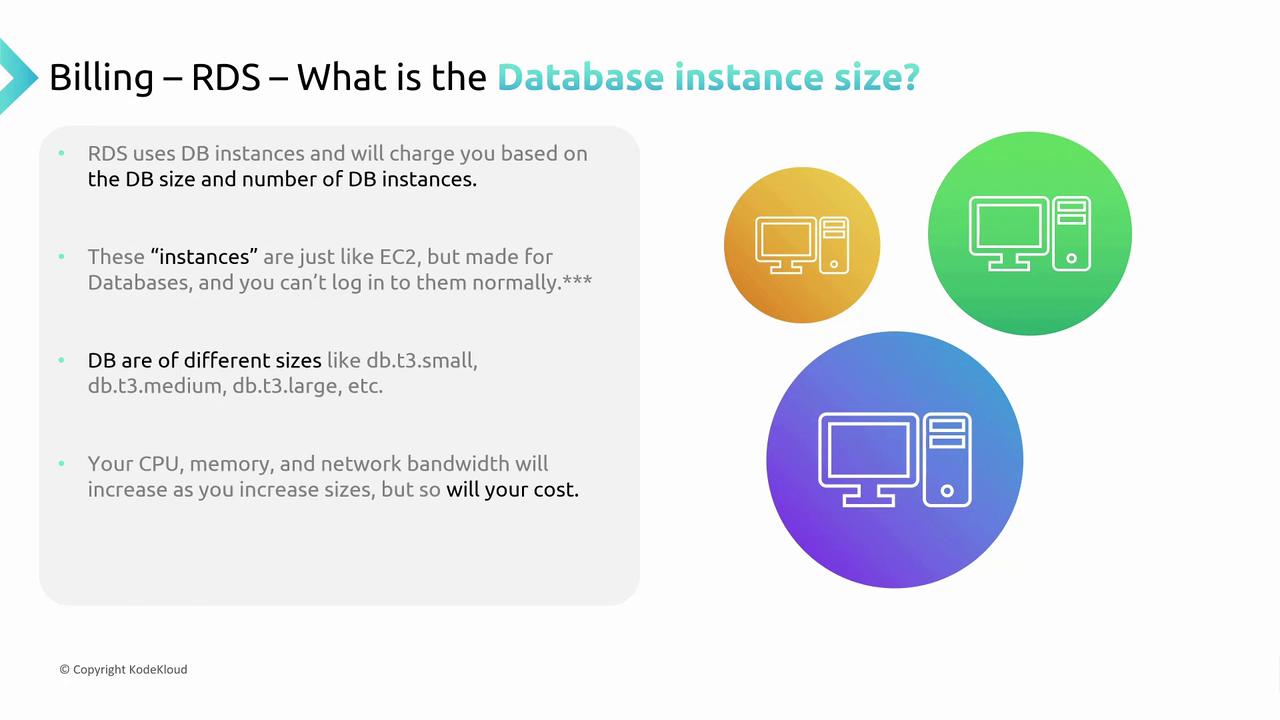
For example, if you check the RDS section on EC2instances.info, you might notice that the first row displays a DB T4G Micro with one gigabyte of memory, two CPUs, and five gigabits of bandwidth. This instance can cost around two cents per hour for on-demand PostgreSQL usage. As you choose larger instances (e.g., a small instance with double the memory), the cost proportionally increases.
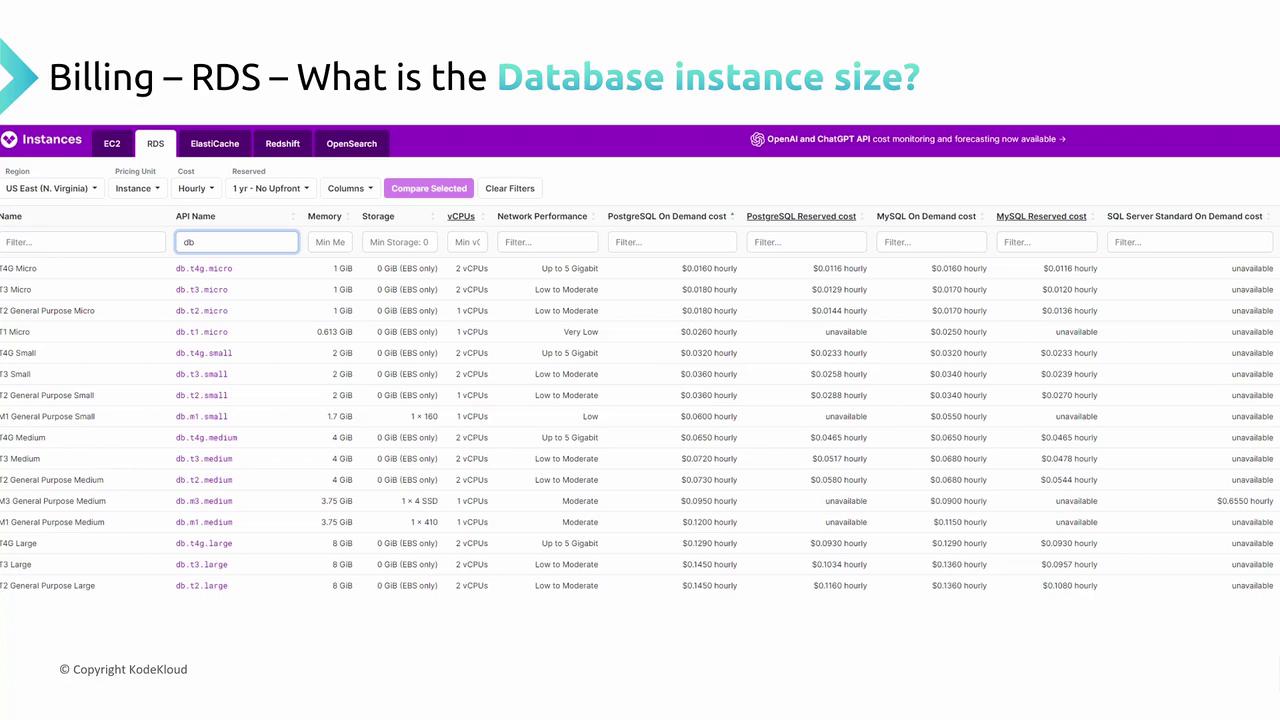
Storage Options
Storage is another critical factor in RDS pricing. You have two main storage options:
- General Purpose Storage: Cost-effective, suitable for most workloads.
- Provisioned IOPS (PIOPS): Delivers high performance with controlled disk throughput at a premium cost.
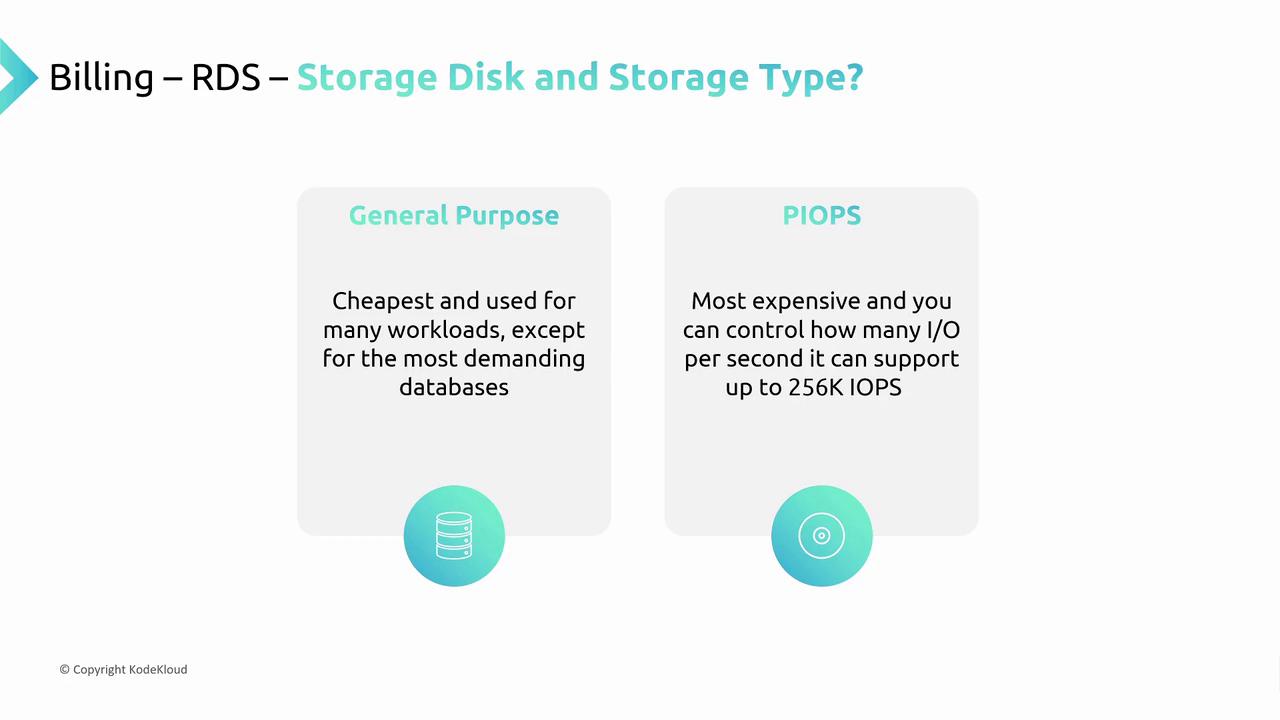
Additional Features
RDS offers various additional features to enhance performance and reliability, though they may contribute to extra costs. Examples include:
- Backup retention options (typically 30 to 45 days).
- Deployment models such as active-passive replication or cluster deployments with multiple secondary replicas.
- Blue-green deployments to facilitate smooth application updates by running parallel database environments.
- Read or write caching optimizations integrated into RDS.
Note
Keep in mind that while advanced performance features are beneficial, they can significantly increase the total cost of operation.
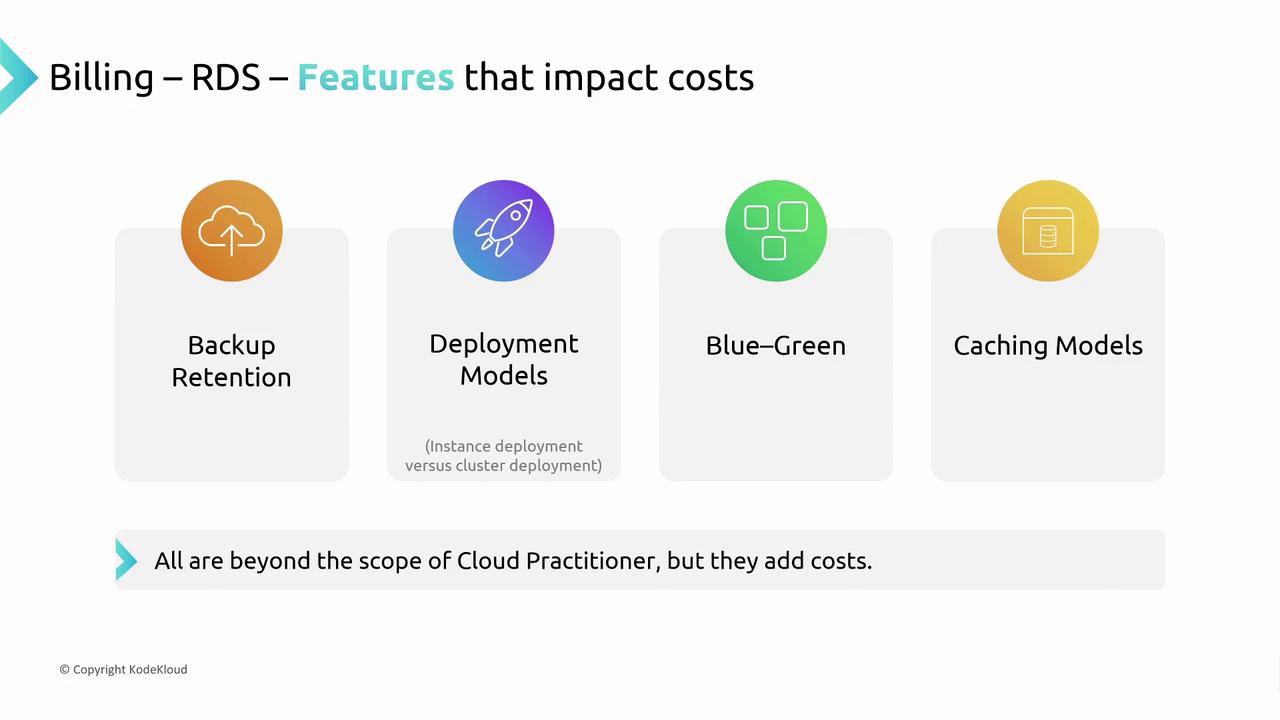
Reservations vs. On-Demand
AWS RDS provides different pricing models:
- On-Demand Pricing: Pay hourly with no long-term commitment.
- Reserved Instances: Commit to a longer term for a discounted rate.
Unlike EC2, RDS does not offer spot instances or savings plans. For long-term projects, reserved instances are highly recommended due to their cost benefits.
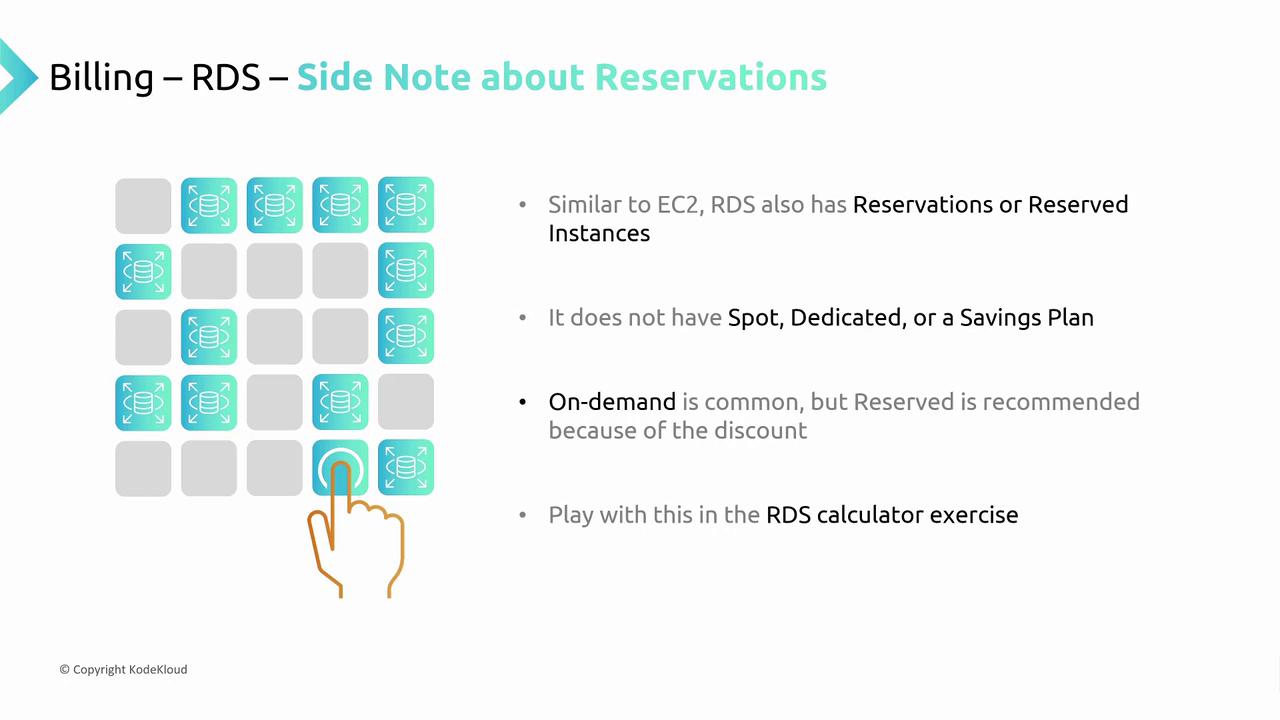
Summary
When evaluating AWS RDS billing, consider these dimensions:
- Service Type: Choose between standard RDS, Aurora, or Aurora Serverless.
- Database Engine: Decide on the engine and its edition (e.g., Oracle, SQL Server, PostgreSQL, MySQL).
- Instance Size: Larger instances like DB T3 or DB R5 offer more performance at a higher price.
- Storage: Balance between General Purpose and Provisioned IOPS based on your workload.
- Pricing Model: Consider on-demand versus reserved instances for cost optimization.
- Additional Features: Features like multi-availability zone deployments and extended backup retainment can impact your overall cost.
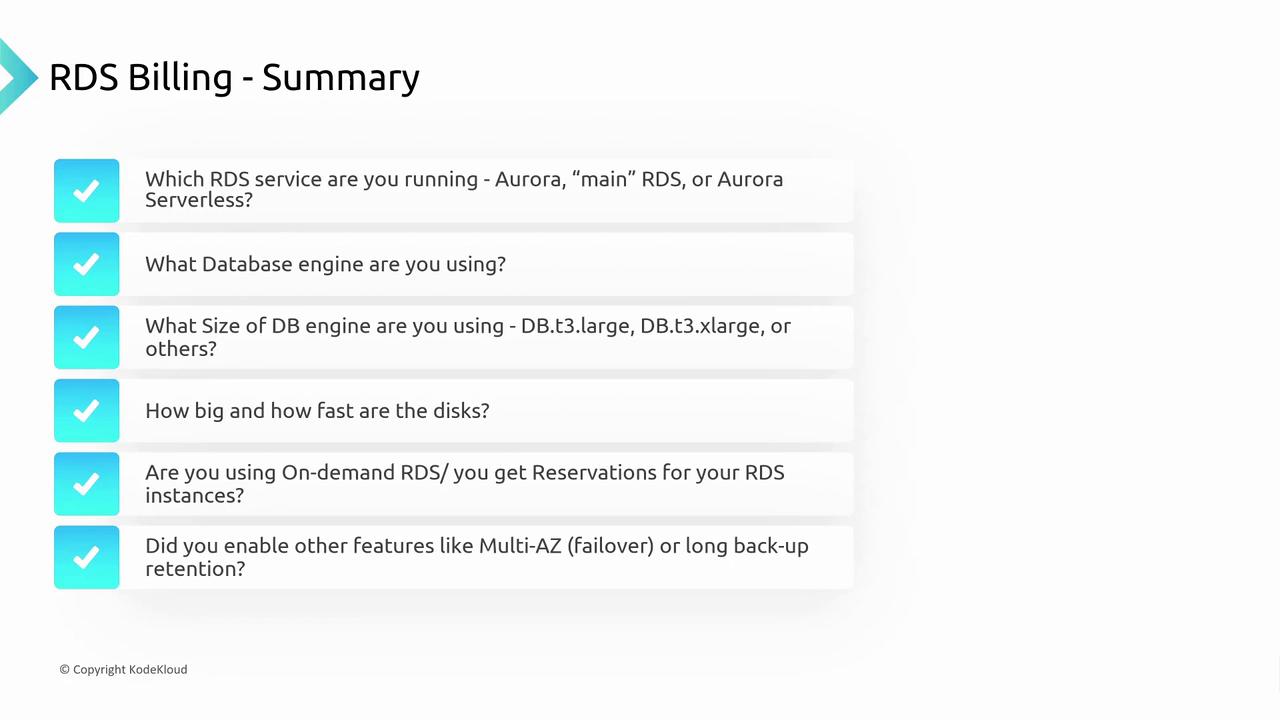
Key Takeaway
By understanding these pricing dimensions, you can optimize your RDS setup to balance performance with cost efficiency.
By grasping these core concepts, you will be better equipped to manage and optimize your database costs with AWS RDS. Happy learning, and see you in the next lesson!
Watch Video
Watch video content